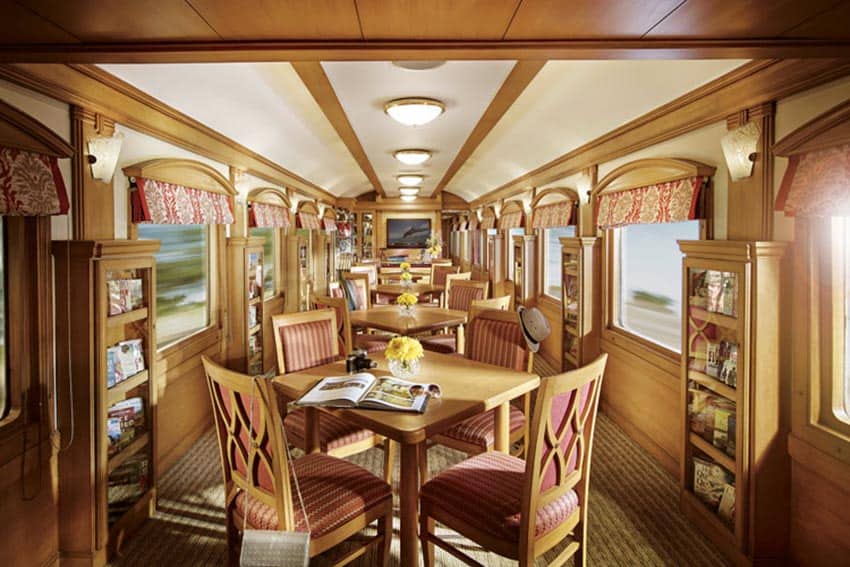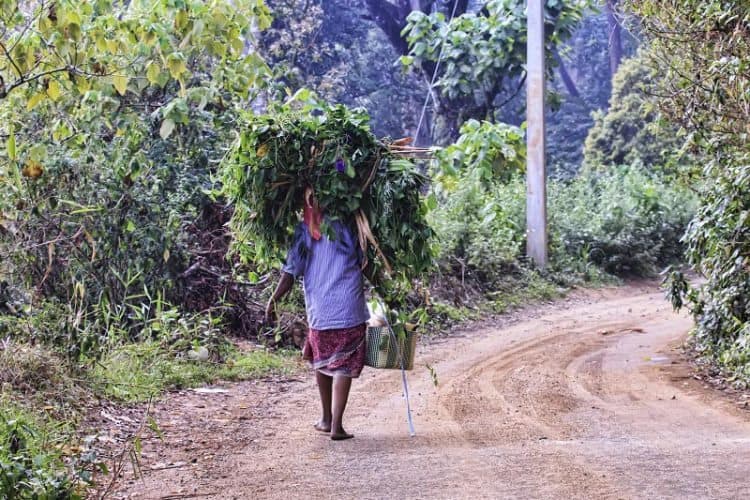
Aunty finds the secret ingredient of Masala Chai
By Cindy-Lou Dale
“What is that spice?” I asked a Mumbai chaiwallah tea vendor.
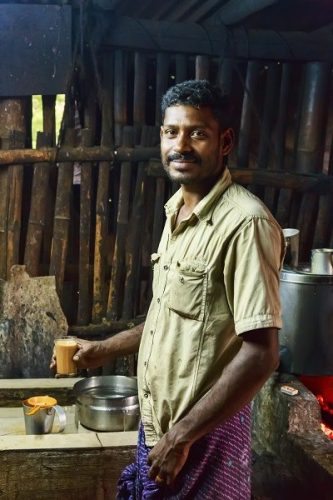
“That which the Aunty is tasting, is my mother’s very special recipe for Masala Chai,” he announced.
When speaking to a person older than themselves, and as a sign of respect, Indian’s call their elders Aunty or Uncle, which after a while is rather endearing.
“I’ve taste Masala Chai before but it doesn’t taste anywhere as good,” I professed. “This has a kick in the pants quality to it.” I took another swig. “Please tell me, what spice gives off that wonderful aroma and that warm, spicy-sweet flavour?”
The chaiwallah took a long slow look to the left, and another to the right, then leaned forward, whispering his family secret into my ear. “This spice, Aunty, is cardamom from a specific region in Munnar. It is only the very best cardamom that grows there, Aunty.” Aunty waited to hear where ‘there’ was but it wasn’t forthcoming.
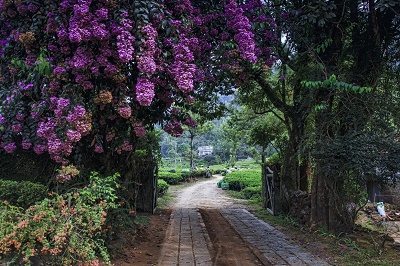
“Where exactly in Kerala?” I asked.
Again, he looked left and right and learned in. “This, Aunty, would be the Idukki district of Kerala. But Aunty must not tell my mother that I told Aunty. She would string me up in Mumbai’s Hanging Gardens and beat me with the yard broom, like the Englishers did to my ancestors back in the days of the Raj.”
I swore secrecy but, I confessed, would tonight book passage to the source of this greatness. He approved of this, the side-to-side snaking of his head confirmed this.
Following the stifling heat and chaotic streets of Mumbai I was ready for a tranquil place to unwind.
After a flight south to Cochin, a 90km drive to Munnar through misty valleys and hills of emerald green, I’m delivered to the Windermere Estate – a genteel colonial guesthouse; a retreat for walkers and nature-lovers set on a coffee and cardamom plantation in the Idukki region. The picture postcard views across the mountains and valleys of the Kerala region are jaw-dropping.
The entrance gate is framed by a huge bougainvillea hanging heavy with pink blossoms. My driver coasts down the gravel driveway into a perfectly manicured serene setting. The quiet ambience was instantly soothing and I immediately knew I’m in for a treat.
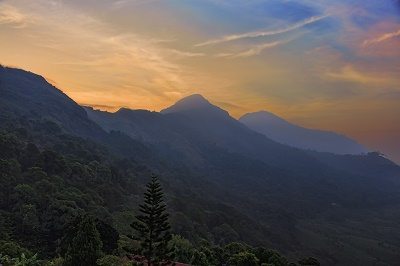
This family run property containing 18 bungalows is set around the main plantation house, which owes its name to one of the oldest cardamom plantation in the region. Retired ophthalmic surgeon Dr Simon bought this 60-acre estate in the 1990s and over time created a true plantation experience. With a unique blend of simplicity and a few touches of luxury Dr Simon has combined modern convenience with old world charm.
The wooden beams and floorboards, red terracotta tiles, jaunty linens and lace curtains speaks of Colonial times, yet there’s an Alpine farmhouse feel to the place with its wooden barn housing a bistro-style dining room, outside on the veranda there’s eating space with panoramic views across the tea estate.
Above ‘The Barn’ restaurant is a bright and airy library-cum-yoga space (the only area, other than the reception, where you can connect to Wi-Fi). Adjacent to The Barn is an open-sided thatched Tea Hut serving afternoon teas and sweet bites, beyond which is an infinity swimming pool, with long views across the plantation.
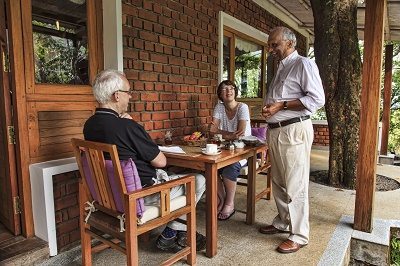
Says Dr Simon, who has his own planter’s bungalow at the centre of the estate: “When on a holiday amidst nature I encourage my guests to feed on the views, explore the plantations, listen to the birds, watch sunsets, feast on our great food and enjoy the environment.”
When Syrian-Christian explorers found the south Indian region of Kerala, they discovered land ideally suited for the large-scale cultivation of spices. At the time this was the most precious and luxurious trading commodity wanted by the West. Munnar, located within Kerala’s Idukki district (a UNESCO World Heritage Site) is home to plantation workers, agriculturists and allied service providers. It’s as a key tourist location and attracts those who are eager to explore its manicured tea gardens and unique bio-diversity.
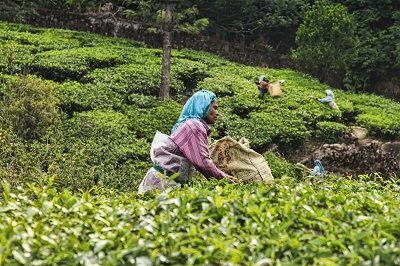
“Windermere is a working cardamom plantation,” says Dr Simon. “Our lineage dates back about a hundred years. The plantation’s encounter with tourism happened by sheer chance but we’ve made a conscious effort to remain small and exclusive – we prefer to be a destination of choice for the discerning traveller.”
Windermere Estate is unpretentious and tranquil. Sure, you’ll find the regular hotel check-list of trappings but what you’ll not get is stiff hotel-schooled staff. Instead you’ll experience genuine hospitality, fresh mountain air and nature walks. This is not a place for people seeking commercialised entertainment (or those with mobility issues). It’s a peaceful getaway for nature lovers, foodies, those needing to remove themselves from the stresses of life. Or like me, those seeking cardamom – the real McCoy.

Sleep
The design of the estate comprises of a series of bungalows built around the central barn-like dining room, which provides all meals. All bedrooms are remarkably spacious and have recently been upgraded. Some are villas, others are cottages with names like Coffee, Vanilla, Cardamom and Tea.
They’re comfortable with twin beds pushed together as doubles, terracotta-tiles or varnished wood floors, teak furnishings, cedar beams and picture windows that open up to immense scenic rural views. There’s no unnecessary clutter or frivolous frills – it’s spotlessly clean with crisp white linen, tea and coffee making facilities and a good chair by the window for curling up in to watch sunrise.
The eight ground-floor Garden Rooms are simple and comfortably furnished with verandas looking out over the garden and valley. The eight larger Cottage Rooms on the upper floors offer balconies with valley views – some have stone feature walls. Two of the Garden Rooms and two of the Cottage Rooms interconnect, providing a good option for families.
The two 1,000sq ft Planter’s Villa Suites contain a double bedroom, a sitting, a balcony, French windows and a bathroom which opens onto a private courtyard. Dressed in classic cream and white with polished wooden floorboards, they offer the best valley views and the most privacy.
B&B prices start at Rs 8,600.
Eat
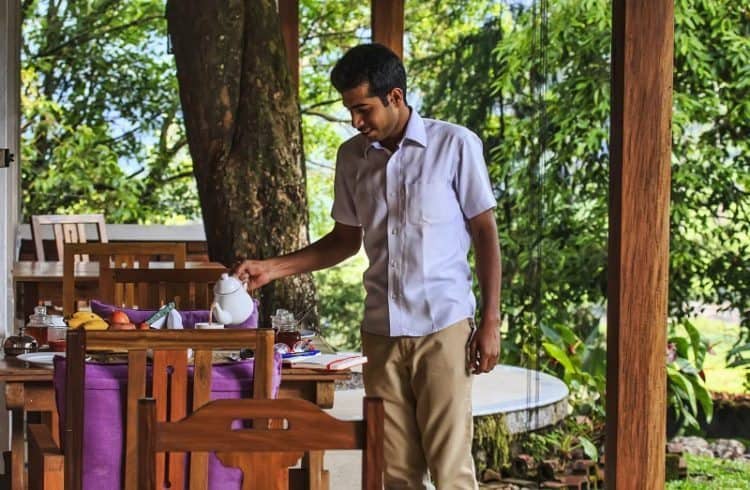
The day kick-starts with papaya or mussambi (tangy yellow orange) juice, followed by a spicy south Indian breakfast or Western comforts such as porridge, toast and a full English fry-up. The breakfasts are really good and super fresh – so fresh that one morning I had to settle for eggs and toast as the cook had not yet returned from the market with the day’s supplies.
Throughout the day sandwiches, authentic Keralan curries and desserts are available at the Tea Hut.
Dinner is a delight! Served in ‘The Barn’, where a team of courteous in-house chefs cook up a storm of traditional Keralan dishes, often following Dr Simon’s own family recipes. The set menu features an array of different dishes including locally-raised beef, pork and mutton, as well as a good selection for vegetarians.
Specialties include mollie, a Syrian-Christian delicacy of fish cooked in fresh coconut milk, and a knock-out pork vindaloo. Often there’s a ‘starter’ barbecue in the hollow beneath a massive garden boulder (atop which is a 360-degree viewing platform).
After dinner a guard guides you back to your accommodations, lighting the way with his torch, ensuring you don’t stumble on the steps.
* In Kerala, any hotel with less than five stars cannot apply for a liquor license. So, if you’d like a sundowner you’ll need to visit a government liquor store – which would fall under the ‘not for the faint hearted’ experiences! But you’re welcome to bring your own and consume it in your room.
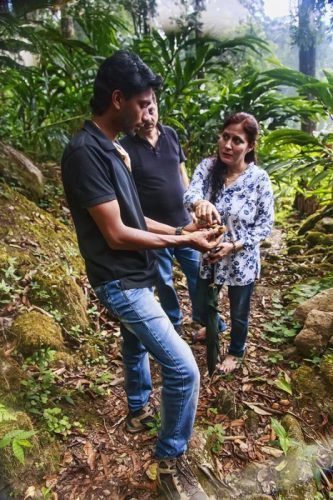
Do
- Windermere arrange daily 4km/2-hour guided walks through the soaring evergreen forests of their plantation to the Attukadu Waterfall. On route you’ll hear and see evidence of indigenous wildlife like barking deer, monkeys, elephants, an abundance of exotic birds and the Malabar giant squirrel. Walking through the cardamom plantation is fascinating – the local guide has an excellent knowledge of the flora and fauna. The bonus at the end of the walk is the tea and cookies at the Tea Hut, who serve a heavenly Masala Chai.
- Ask after Renjith Hadlee, a local guide, who will take you on a 5-hour mountain trek, exploring the lush Chokanadu and Lakshmi hills and Kolukkumali – the highest organic tea plantation in the world. He’s extremely flora and fauna savvy and speaks English fluently (degreed in English Literature) and will no doubt regale you with close encounter elephant tales.
- This is bird watching paradise and home to more than 150 species of indigenous and exotic birds – Malabar Whistling Thrush, Square-tailed Bullbill, Long-tailed Shrike, Grey-headed Canary Flycatcher, Nilgiri Wood Pigeon, Red Whiskered Bullbull, Grey-breasted Laughing Thrush, Nilgiri Flycatcher – these are just some of the birds I saw from my balcony. Of course, that’s besides my peeping-tom Jungle Owlet that sat at my open window one night, watching me sleep.
Getting There
Windermere Estate is set in Munnar, part of the Kerala Hill Country in southern India. The nearest airport is Cochin (95km). From the Cochin Airport it’s a 3-hour drive to Munnar from whence Windermere Estate can arrange a taxi transfer. It’s a remote area, so it’s wise to have your own car and driver; however, for local excursions, Windermere can arrange transport.
Top Tips
- When to visit: It tends to rain most heavily during June and July. The best time to visit is between August and March – before temperatures rise and the pre-monsoon showers and humidity set in;
- For the best views, loads of space and privacy, be sure to reserve a Planters Villa;
- Trek through the lush green forests and misty blue mountains on a pre-arranged 5-hour guided trek – don’t forget your walking boots and waterproofs.
- For early risers there is a guided early morning trek, winding up through the tea bushes to the top of Chokkan Mudi, which stands at 2,500m overlooking the estate.
- It’s Carnival Time in Offida, Italy - January 16, 2024
- Supercar Drive: The Bad A$$ Raging Bull - December 21, 2023
- Under the Tuscan Sun on a Farm in Chianti - November 30, 2023



